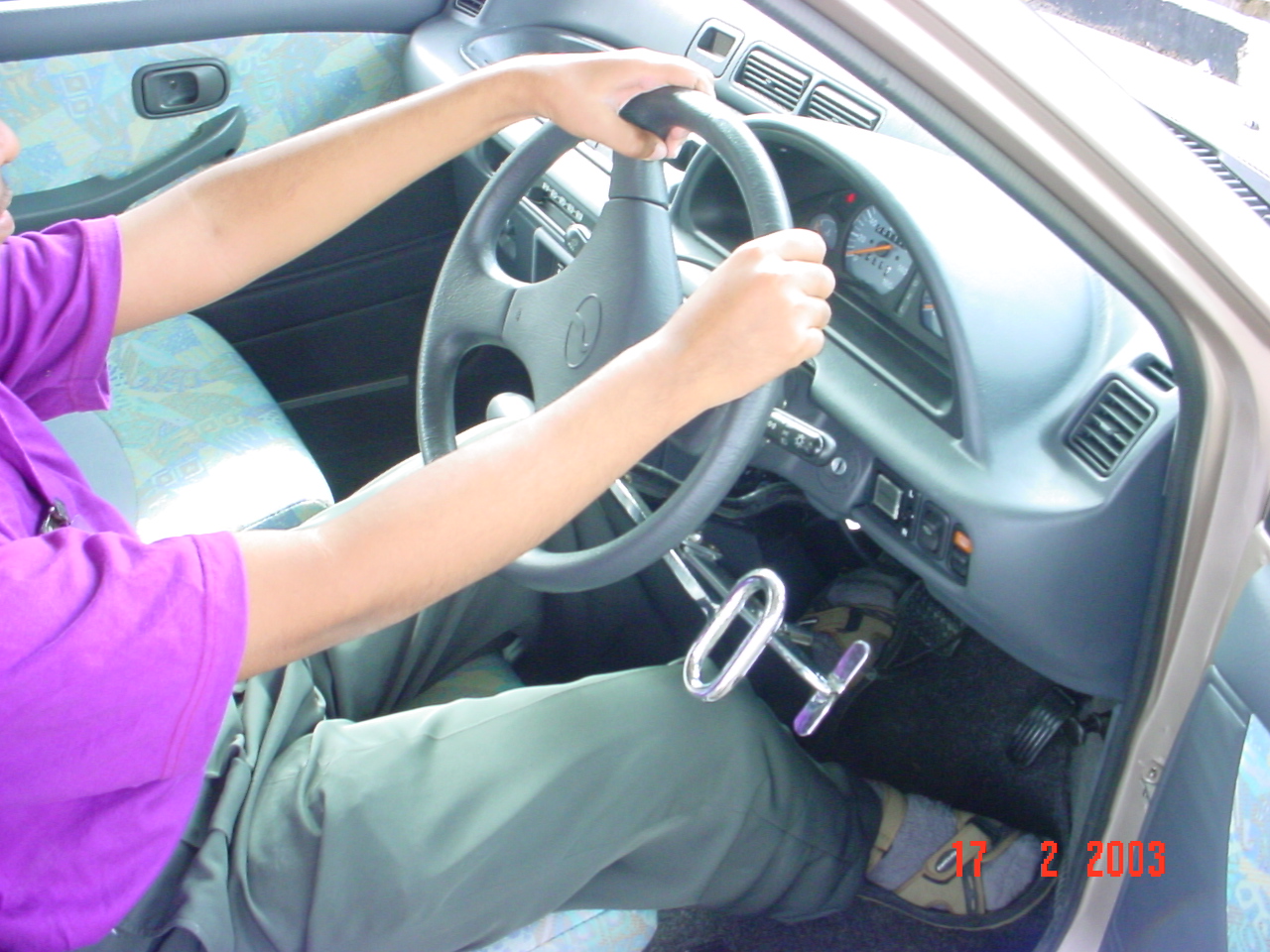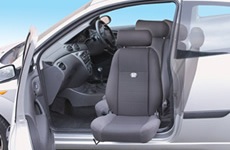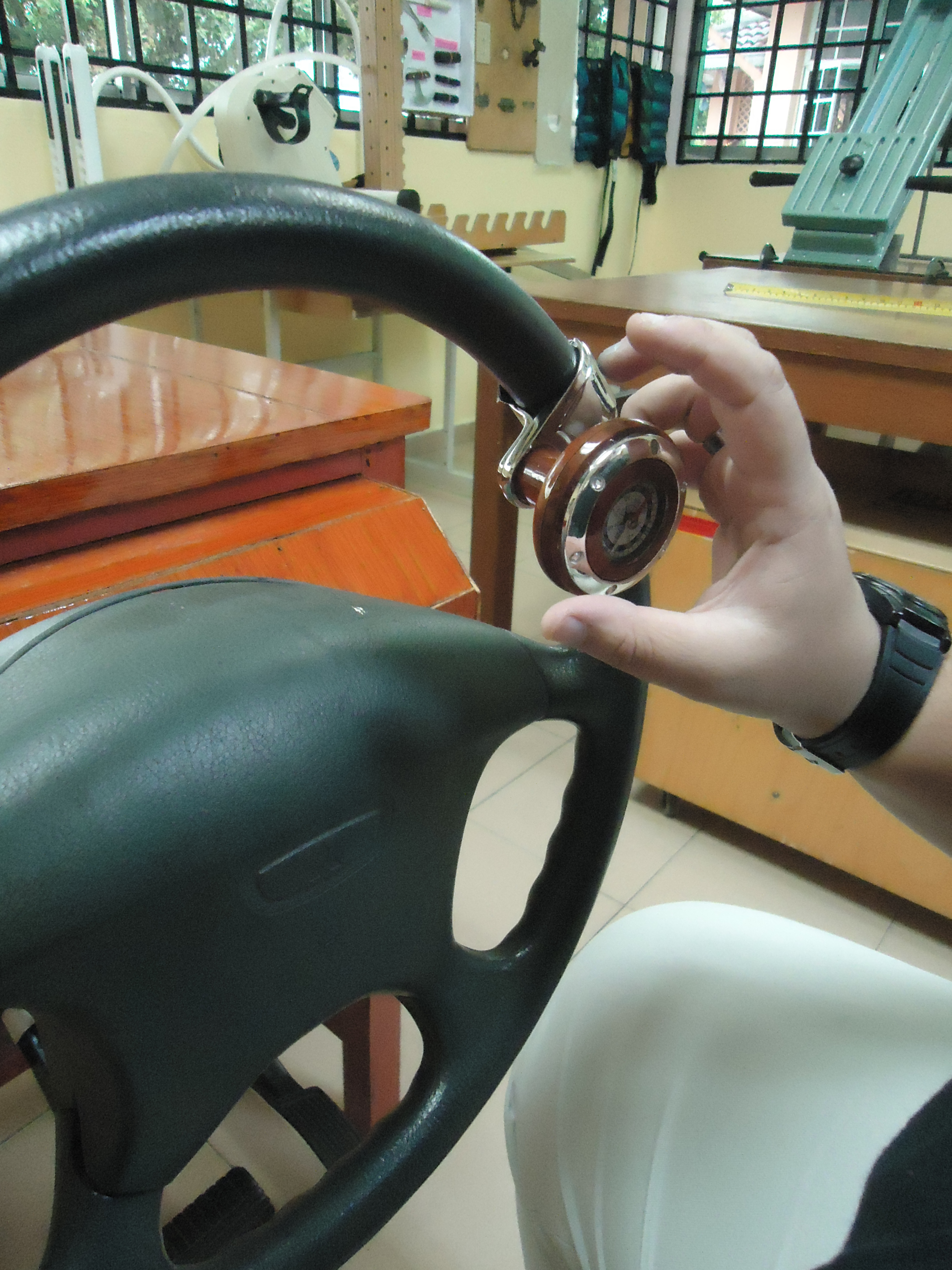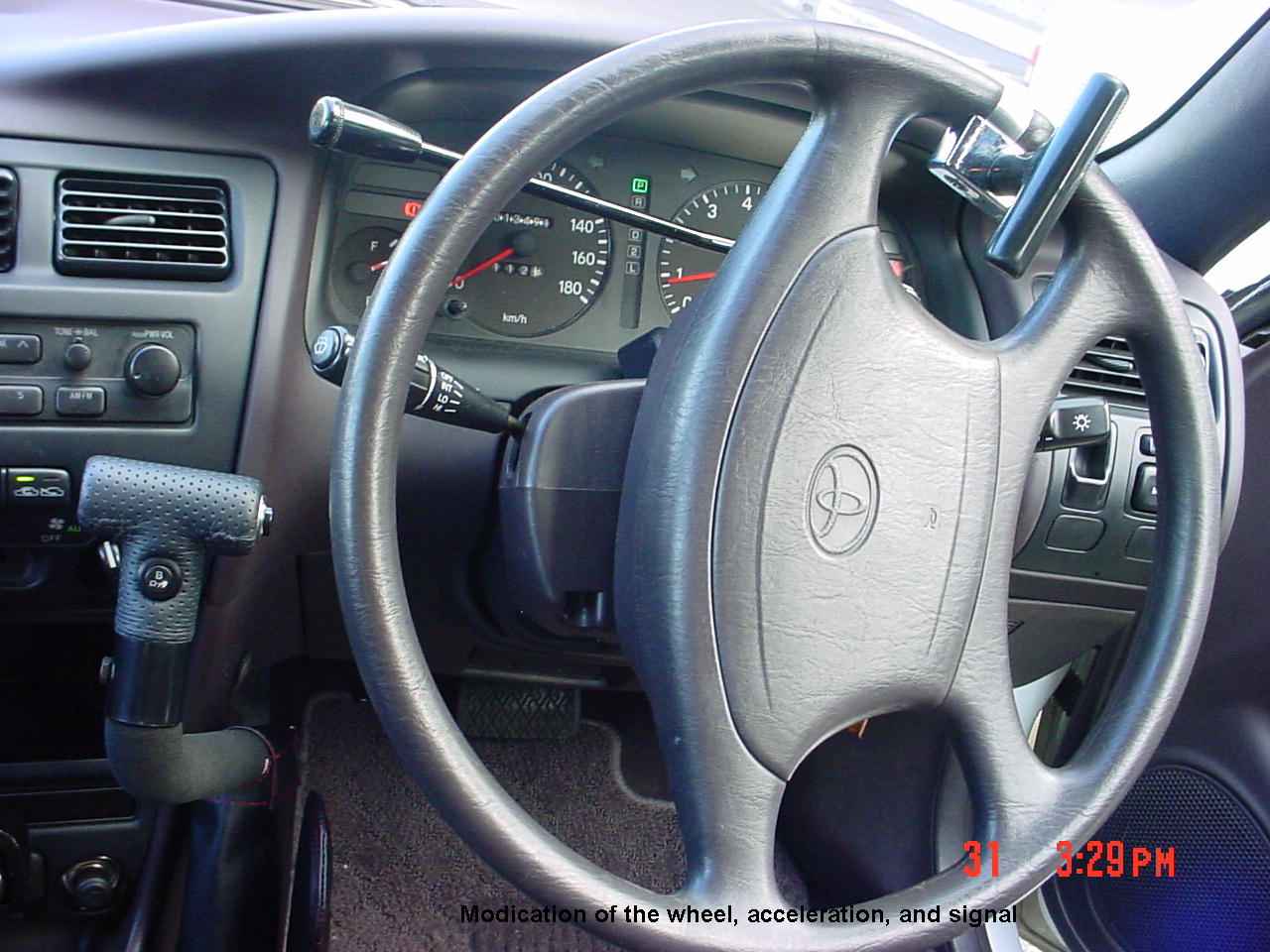Introduction
Driving is a complex task that requires physical and sensory skills besides cognitive-perceptual abilities such as observation, attention, and the ability to make decisions, reaction time and accurate perception. A person with Disabilities (PWDs) is defined as a person who suffers long-term disabilities in physical, mental, intellectual or sensory when facing multiple barriers which may restrict their full participation in a society. The purpose of a disability test is to ensure that people with disabilities are assessed on their capabilities of maneuvering motor vehicle safely. Following the Pre Driving Screening, appropriate recommendations will be made for the individual and their referring physicians. An Occupational Therapist role in the assessment are to :
- Determine a client’s ability to meet the defined competency criteria in driving
- Identify impairment in related to deficiencies in driving performances
- Identify factors contributing to driving difficulties
- Identify modifications required to facilitate driving functions
Component of pre driving assessment include :
- Driving and medical history Information of license requirement, driving license status, medical history and medications, client’s driving habits and driving experience.
- Physical evaluation Assessment of physical capabilities such as the ability to transfer in and out of cars, muscle strength, range of motion, movement, ability to operate and control the vehicle and reaction time.
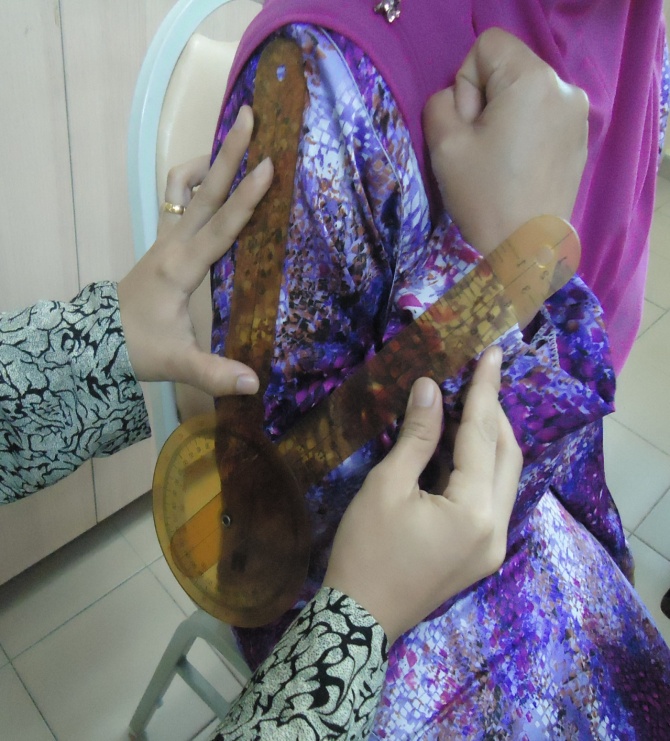 |
 |
| Assessment range of motion | Assessment of Muscle strength |
- Sensory evaluation Evaluation of vision problems (near and distance acuity), traffic light color recognition, as well as evaluating the sensory problems in the upper and lowerlimbs.
- Cognitive – perceptual evaluation Assessing cognitive-perceptual ability such as concentration, attention, memory and decision making.
- Emotional evaluation Evaluate whether there is panic or anxiety reactions while driving.
The problems faced by the disabled to drive In general, the problems faced by the disabled to drive is as follows :
- Range of motion and strength problem Limitation of range of motion in the hip joint, knee and ankle can cause problems for disabled people to transfer in and out of the car. It also affects disabled people to sit in a comfortable situation to control the vehicle components such as horns, steering wheel, signal lights, gears, mirrors and others. In addition, the limitation of movement in the legs, especially ankle joint will impact the pressure to be placed on the accelerator and brake pedal to control the speed of the car.
- Muscle tone problem Increase muscle tonus (spastic) or low (flaccid) will result in difficulty in controlling muscle movement while driving, especially during steering control or handle a motorcycle. Moreover, if one is available spasm, it can also cause functional hands and feet will be distracted while driving.
- Sensory Problem Problems usually identified are pain, reduce sensation, vision, proprioception and kinesthesia where disabled people likely to have difficulty putting the foot in correct position on the accelerator pedal and keep driving even if feet are not in the correct position.
- Balance Problem Balance problems affect the ability to transfer in and out of the car safely.
- Perception and cognition problem Difficulty concentrating, attention, information processing, memory, planning, decision making, judgment and reaction time while driving between the problem to be evaluated for a test drive.
In conclusion, the Officer / Medical Occupational Therapist will conduct an assessment to look at the seriousness of the problem and any information obtained will be used to determine:
- Vehicles should be modified or not
- If necessary, modify the type of vehicle needed
- Driving license must be maintained or changed to license A (disabled) or
- Not recommended to drive for safety issues
Conditions and car modifications
Disabled vehicle modifications can be done on any registered vehicle workshop with the Department of Road Transport. Lists of registered workshop can be checked on the www.jpj.gov.my. After the pre-driving assessment has been conducted, Occupational Therapist will determine an individual’s functional limitation and type of modification to be done to ensur safety. Modifications will be suggest according to client’s disabilities condition or disabled as follows :
| Disability | Effects on driving | Suggested driving aids | ||
| Left Leg Missing or Non-Functional |
|
|
||
| Right Leg Missing or Non-Functional |
|
|
||
| Both Legs Missing or Non-functional |
|
|
||
| Left Arm Below Elbow Missing or Non-Functional |
|
|
||
| Right arm Below Elbow Missing or Non-Functional |
|
|
||
| Both arm below elbow missing or non functional |
|
Use of prosthesis
Without prosthesis:
|
||
| Left arm above elbow Missing or Non-Functional |
|
|
||
| Right Arm above Elbow Missing or Non-Functional |
|
|
||
| Both arm above elbow missing or non functional.i |
|
|
Conclusion
Pre-driving assessment for People with Disabilities is important to improve independency and a patient’s safety in driving and could indirectly improve services towards disabled patients. In addition, there are also guidelines of medical standards for driving license for people with disabilities issued by the Occupational Health Unit, Division of Disease Control, Ministry of Health Malaysia in 2011. These guidelines are to ensure an assessment report on a disable who wishes to apply for a license does not pose peril to society by being prone to accidents. Vehicle are only authorized if criteria are met under provisions of section 30 (1) AND (2) of the Road Transport Act 1987 and the rules The Motor Vehicles (Driving Licences) Order 1992.
References
- Mallon,K. Wood, J.M.(2004).Occupational therapy assessment of open-road driving performance: Validity Of directed and self-directed navigational instructional components. American Journal of Occupational Therapy,58, 279-286.
- Galski,T. Ehle,T.H. Bruno,L.R. (1989, December 13). An assessment of measure to predict the outcome of driving evaluations in patients with cerebral damage, American Journal of Occupational Therapy, 709-713.
- Physical disabilities ( missing or non-functional body parts ) their effects on driving and suggested driving Aids.
| Last Reviewed | : | 28 August 2020 |
| Writer/Translator | : | Suzana bt. Zakaria |
| Accreditor | : | Premalatha a/p Sundram |
| Reviewer | : | Tan Foo Lan |


